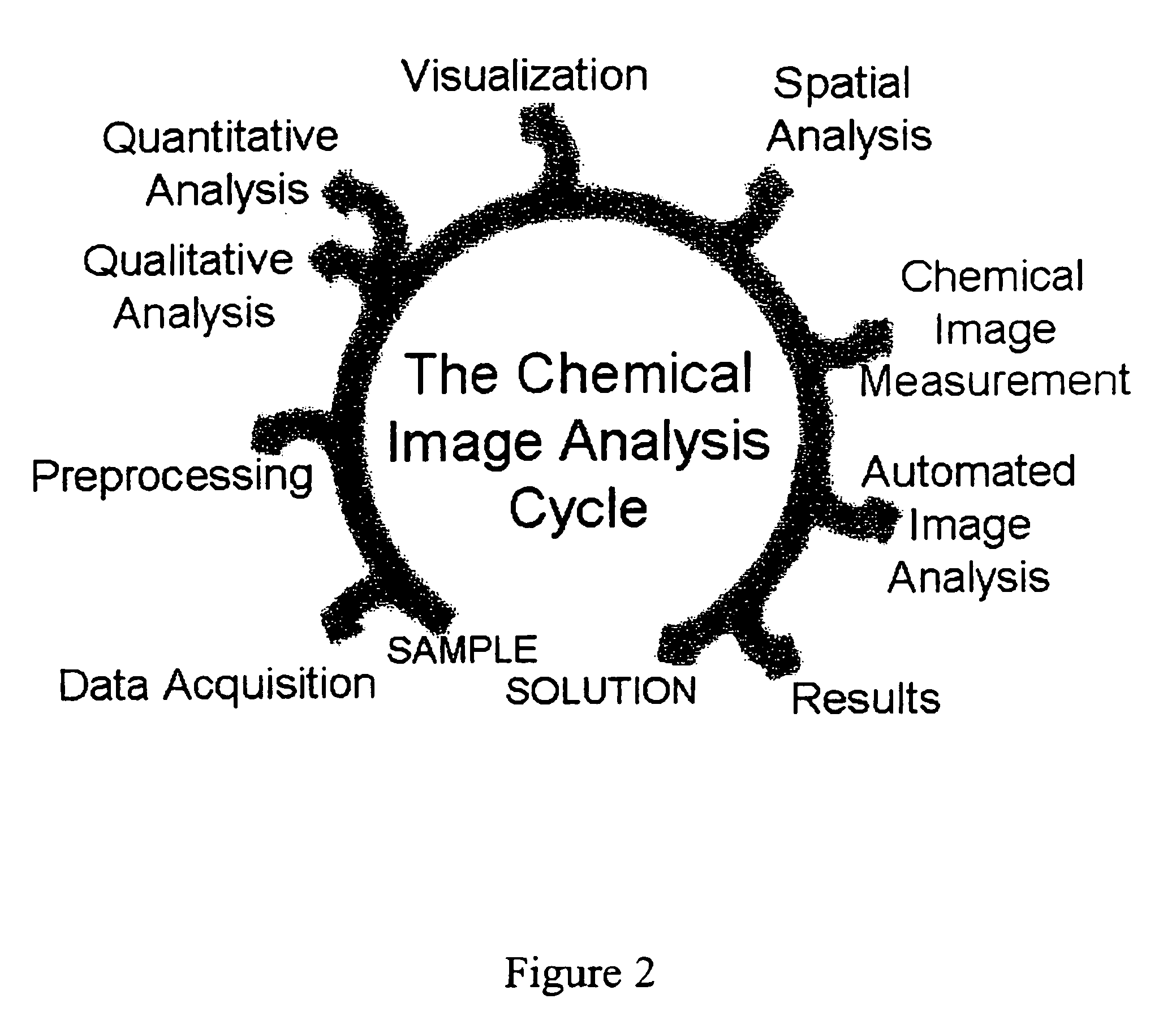Near infrared chemical imaging microscope
a chemical imaging and near infrared technology, applied in the direction of optical radiation measurement, instruments, spectrometry/spectrophotometry/monochromators, etc., can solve the problems of defective devices often left undiagnosed, difficult device fabrication and device processing defects, and difficult manufacturing of compound semiconductors
- Summary
- Abstract
- Description
- Claims
- Application Information
AI Technical Summary
Benefits of technology
Problems solved by technology
Method used
Image
Examples
example
Overview
[0057] As the demand for high quality, low cost X-ray, γ-ray and imaging detector devices increases, there is a need to improve the quality and production yield of semiconductor materials used in these devices. One effective strategy for improving semiconductor device yield is through the use of better device characterization tools that can rapidly and nondestructively identify defects at early stages in the fabrication process. Early screening helps to elucidate the underlying causes of defects and to reduce downstream costs associated with processing defect laden materials that are ultimately scrapped. The present invention can be used to characterize tellurium inclusion defects in cadmium zinc telluride (CdZnTe) semiconductor materials based on near infrared imaging. With this approach, large area wafers can be inspected rapidly and non-destructively in two and three spatial dimensions by collecting NIR image frames at multiple regions of interest throughout the wafer u...
PUM
| Property | Measurement | Unit |
|---|---|---|
| wavelengths | aaaaa | aaaaa |
| size | aaaaa | aaaaa |
| size | aaaaa | aaaaa |
Abstract
Description
Claims
Application Information
 Login to View More
Login to View More - R&D
- Intellectual Property
- Life Sciences
- Materials
- Tech Scout
- Unparalleled Data Quality
- Higher Quality Content
- 60% Fewer Hallucinations
Browse by: Latest US Patents, China's latest patents, Technical Efficacy Thesaurus, Application Domain, Technology Topic, Popular Technical Reports.
© 2025 PatSnap. All rights reserved.Legal|Privacy policy|Modern Slavery Act Transparency Statement|Sitemap|About US| Contact US: help@patsnap.com



